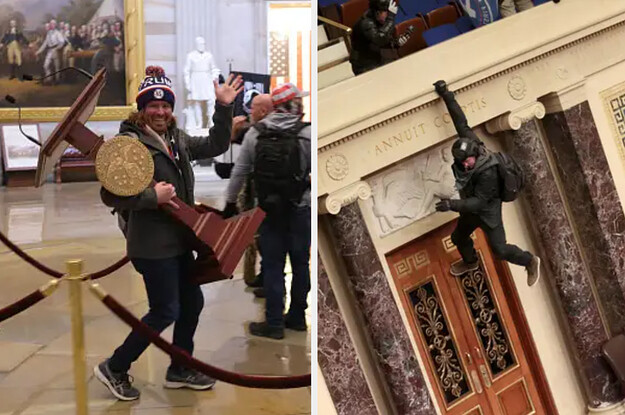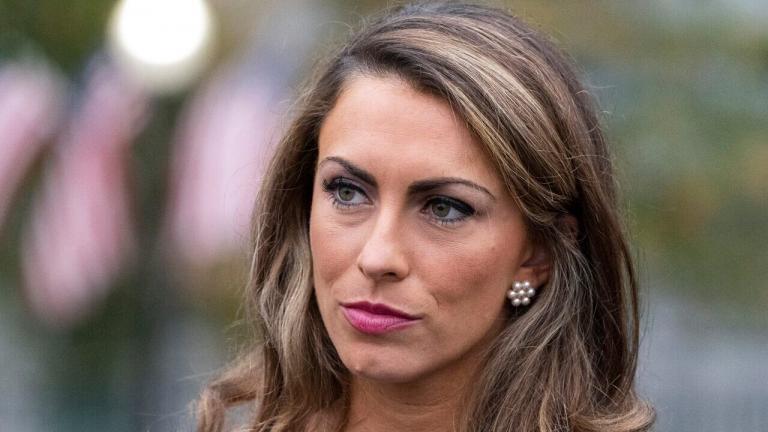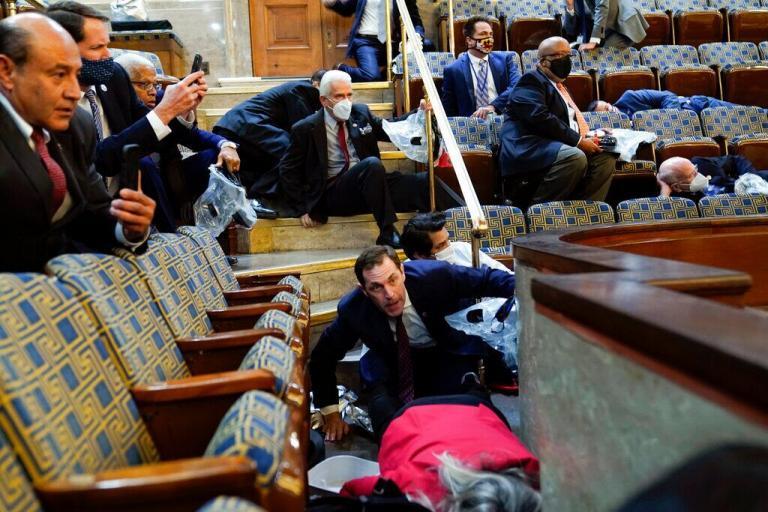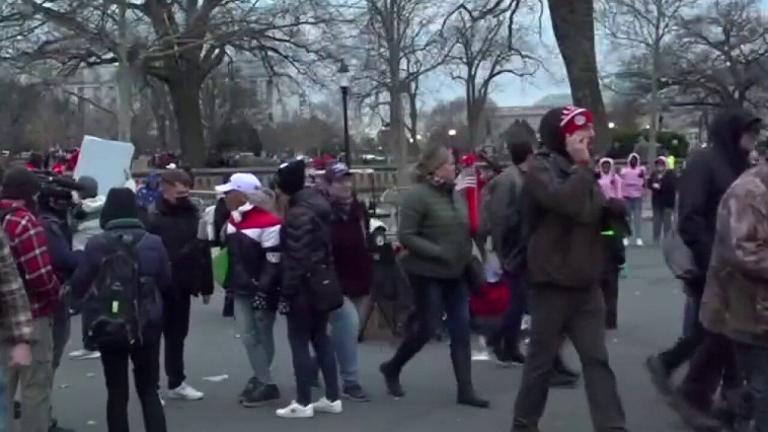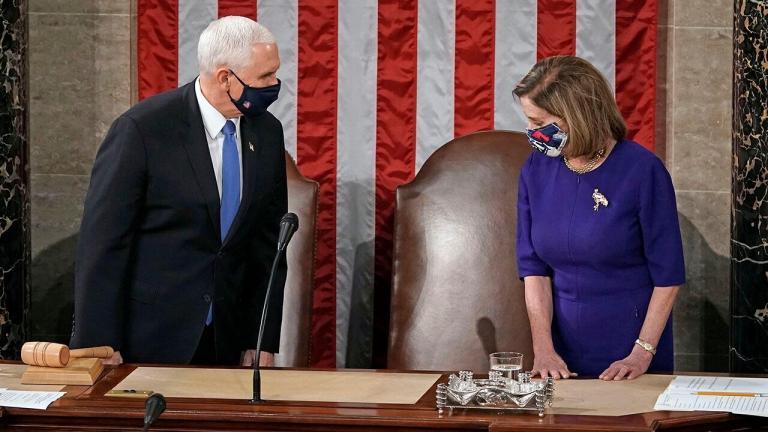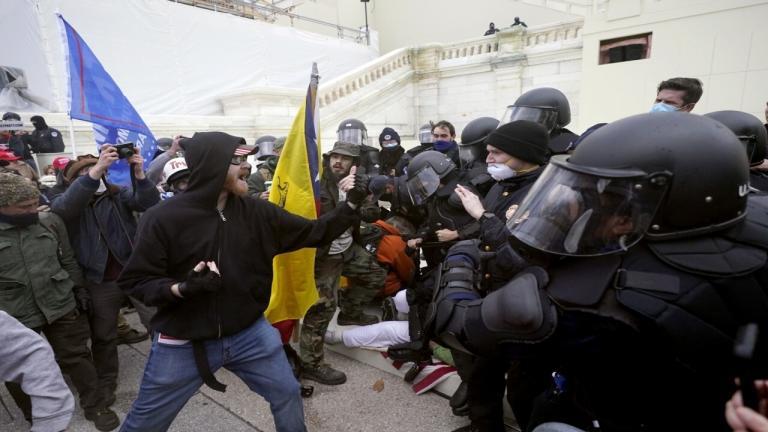Lawyers for former President Donald Trump gave a significantly shorter presentation Friday in his defense than the Democrats’ House impeachment managers did the previous two days in acting as prosecutors.
Day Four of Trump’s second Senate impeachment trial began around noon and Trump’s legal team yielded the balance of its 16 hours of allotted time shortly after 3:15 p.m.
Senators then began to ask written questions of both the prosecutors and the defense.
The Senate adjourned at 6:29 p.m. and was set to reconvene the impeachment trial at 10 a.m. Saturday.
Just before adjournment, Senate Majority Leader Chuck Schumer, D-N.Y., and Minority Leader Mitch McConnell, R-Ky., praised Capitol Police officer Eugene Goodman, who is among officers who will receive a Congressional Gold Medal for his actions Jan. 6.
The Senate chamber erupted in applause for Goodman, who was present and who can be seen in viral video protecting senators by luring members of the mob away. Sen. Mitt Romney, R-Utah, first announced the medal, The New York Times reported.
Here are seven key highlights from the fourth day of the former president’s trial on a single charge of incitement to insurrection in connection with the Jan. 6 riot at the Capitol. Democrats seek to convict Trump, then disqualify him from future federal office.
1. ‘Can’t Incite What Was Already Going to Happen’
During his presentation, Trump lawyer Michael van der Veen played video of several news reports showing that rioters had planned the attack—in some cases for weeks.
Thus, he argued, the mob wasn’t inspired by Trump’s speech at a rally just south of the White House during a joint session of Congress to count the Electoral College votes that made Joe Biden president.
“The criminals who infiltrated the Capitol must be punished to the fullest extent of the law,” van der Veen said, adding:
They should be in prison for as long as the law allows. The fact that the attacks were apparently premeditated—as alleged by the House managers—demonstrates the ludicrousness of the incitement allegation against the president. You can’t incite what was already going to happen.
Van der Veen praised law enforcement officers at the scene who were heroic and courageous. But, he said political leadership should have had better security in advance of the joint session of Congress, considering the previous political violence in Washington.
“As many recall, last summer the White House was faced with violent rioters, night after night,” he said. “They repeatedly attacked Secret Service officers and at one point pierced a security wall that culminated in the clearing of Lafayette Square.”
2. ‘No Human Being Seriously Believes’
Van der Veen also argued that what Democrats’ impeachment managers claimed was incitement t insurrection was “ordinary political rhetoric.”
Democrats frequently homed in on one statement by Trump to supporters at the Jan. 6 rally: “If you don’t fight like hell, you’re not going to have a country anymore.”
“This is ordinary political rhetoric that is virtually indistinguishable from the language that has been used by people across the political spectrum for hundreds of years,” van der Veen said. “Countless politicians have spoken of fighting for our principles. Joe Biden’s campaign slogan was ‘Battle for the Soul of America.’ No human being seriously believes that the use of such metaphorical terminology is incitement to political violence.”
3. Democrats’ Violent Rhetoric
House prosecutors had relied heavily on video of Trump and the rioters, and Trump’s lawyers showed video compiling numerous instances in which Democrats not only used the words “fight” or “fight like hell” but appeared to condone or call for violence.
“While the president did not engage in any language of incitement, there are numerous officials in Washington who have indeed used reckless, dangerous, and inflammatory rhetoric in recent years,” van der Veen said.
The lawyer noted that House Speaker Nancy Pelosi, D-Calif., called Trump “an imposter and a traitor.” Pelosi and many other Democratic politicians appeared to encourage the riots in American cities over the summer, he said:
When violent, left-wing anarchists conducted a sustained assault on a [federal] courthouse in Portland, Oregon, Speaker Pelosi did not call it an insurrection. Instead, she called the federal law enforcement officers protecting the building ‘storm troopers.’ When violent mobs destroyed public property, she said, “People will do what they do.’
The defense lawyers also referred to Vice President Kamala Harris’ saying of the summer riots last year, when she was a California senator: “Everyone beware, they are not going to stop before Election Day in November and they are not going to stop after Election Day. They are not going to let up and they should not.”
Harris made the comment in June, before Biden selected her as his running mate.
Van der Veen talked about the June 2017 shooting of House Minority Whip Steve Scalise, R-La., by a supporter of Sen. Bernie Sanders, I-Vt., who set out to kill Republican members of Congress.
“A man claiming to be inspired by the junior senator from Vermont came here to a softball game to kill as many senators and congressmen as he could,” van der Veen said. “It cannot be forgotten that the president did not blame the junior senator from Vermont.”
The Trump team also showed video in which Senate Majority Leader Charles Schumer, D-N.Y., used violent rhetoric at a rally in front of the Supreme Court, and another clip of President Joe Biden, as a candidate for the White House, saying he would like to “beat the hell out of” Trump.
“Under the standards of the House impeachment article, each of these individuals should be retroactively censored, expelled, punished, or impeached,” van der Veen said.
The past four years make it clear Democrats are not concerned about political violence, the lawyer said, but simply want to silence Trump and suppress his supporters:
This unprecedented effort is not about Democrats opposing
political violence. It is about Democrats trying to disqualify their political opposition, It is constitutional cancel culture. History will record this shameful effort as a deliberate attempt by the Democrat Party to smear, censor, and cancel not just President Trump, but the 75 million Americans who voted for him.
4. Democrats’ Objections to 2016 Outcome
Democrats’ House impeachment managers repeatedly called Trump’s challenge of the 2020 election outcome “the big lie,” and cast it as unprecedented.
The former president’s legal team, however, noted that after Trump won the 2016 election, Democrats tried to persuade the Electoral College to overturn the outcome.
Moreover, Rep. Jamie Raskin, D-Md., leader of the impeachment managers, was among House Democrats who challenged the certification of the Electoral College votes on Jan. 6, 2017.
The lawyers showed video of Raskin that day during the joint session of Congress, with Biden, then vice president, ruling Raskin’s and other Democrats’ objections out of order in his role as president of the Senate.
“I have an objection because 10 of the 29 electoral votes in Florida were cast by electors not legally certified,” Raskin said during his objection to certifying Trump’s victory.
Biden responded: “Is it signed by a senator?
Raskin answered, “Not as of yet, Mr. President.”
Biden replied, “In that case, the objection cannot be entertained.”
Additional video from 2017 showed other House Democrats objecting to certifying electoral votes from the states of Alabama, Georgia, and North Carolina in favor of Trump. However, none had a Senate sponsor as required.
After the Trump team wrapped up and the Senate moved to question-and-answer time, Raskin had a chance to defend his 2017 action. He said that was different because no one stormed the Capitol then:
I was one of the people who took about 30 seconds in 2016 [sic] to point out that the electors from Florida were not actually conforming to the letter of the law, because they have a law in Florida that you can’t be a dual officeholder. In other words, you can’t be a state legislator and also be an elector. But I think then-Vice President Biden properly gaveled me down and said, ‘Look, we are going to try to make the Electoral College work and we are going to vindicate the will of the people.’ That is pretty much what has happened because nobody has stormed the Capitol before.
5. First Amendment and Public Officials
Trump’s lawyers stressed that his speech at the Jan. 6 rally, which he was still delivering as the mob began its assault on the Capitol, was protected under the First Amendment. They cited three separate Supreme Court cases.
The key Supreme Court finding on incitement law comes in its 1969 ruling in Brandenburg v. Ohio establishing that, however inflammatory speech may be, the government can’t prosecute unless the speech is directed at inciting violence, poses an imminent threat of violence, and that violence is likely to occur.
“The Supreme Court ruled in Brandenburg that there is a very clear standard for incitement,” Trump lawyer David Schoen said. “In short, to paraphrase, whether the speech was intended to provoke imminent, lawless action, and was it likely to do so. ‘Go to the Capitol and cheer on some members of Congress, but not others.’”
“They know it doesn’t meet the standard for incitement,” he said of Democrats. “So they edited it down [in their video exhibit].”
Van der Veen focused on two separate high court cases that dealt directly with the First Amendment rights of a public official—which he said was most relevant.
He referred to the 1962 case of Wood v. Georgia and the 1966 case of Bond v. Floyd, in which the Supreme Court asserted that public officials have First Amendment protections of their pronouncements.
The Wood case involved a sheriff who publicly mocked a grand jury proceeding. The high court rejected a citation for contempt of court, determining that the sheriff was exercising his right to speak and it didn’t affect his job.
In the Bond case, the Georgia Legislature attempted to prevent a newly elected lawmaker who was opposed to the draft and Vietnam War from being seated. His opponents claimed that he could not take an oath to the Constitution.
But the high court held that the duly elected lawmaker was free to express his view and still be seated.
“The Constitution and the First Amendment must certainly apply to these impeachment proceedings and Mr. Trump’s speech deserves full protection under the First Amendment,” van der Veen told senators.
6. Trump’s Call for Peace
A third Trump lawyer, Bruce Castor, noted that Trump’s speech Jan. 6 wrapped up at 1:11 p.m. Rather than doing nothing, as House managers alleged, at 2:33 p.m. Trump tweeted to supporters: “Stay peaceful.”
Castor also noted that Trump’s speech at the rally referred to the riots staged by left-wing activists over the summer.
“If this happened to the Democrats, there would be hell all over the country,” Trump said, referring to evidence of a stolen election. “But just remember this, you are stronger, you are smarter, and you’ve got more going than anybody. And they try to demean everybody having to do with us. And you are the real people. You are the people who helped build this nation. You’re not the people who tore down this nation.”
Castor asked senators: “Is it possible that President Trump’s disdain for political violence could be any clearer to the persons listening as he was speaking? Is it possible that his words could have been misunderstood?”
The lawyer continued:
The president asked that the attendees at his rally ‘peacefully’ make their voices heard. …
The managers would have you believe that the president’s supporters usually follow his every word, but in this case, imputed some imaginary meaning to them, while ignoring his most clear instructions.
President Trump told them to ‘peacefully and patriotically’ make your voices heard, and the House managers took from that: ‘Go down to the Capitol and riot.’
Castor also questioned the term “insurrection,” the word used in the House’s impeachment charge.
“They continue to say ‘insurrection.’ Clearly, there was no insurrection,” Castor said, adding:
Insurrection is a term of art. It’s defined in the law. It involves taking over a country, a shadow government, taking the TV stations over, and having some plan on what you’re going to do. What our colleagues here across the aisle meant is incitement to violence. So the word incitement is critical to the case.
Trump’s defense lawyers specifically referred to how the House impeachment managers played video taking Trump’s comments out of context, then played a side-by-side video of clips to show Trump’s actual comments in full.
Specifically, the House managers’ video cut off Trump at the words “And we are going to walk down to the Capitol,” then shifted to shots of rioting.
The former president’s lawyers showed video of him telling supporters to “peacefully and patriotically” protest the counting of electoral votes in the joint session of Congress.
“Why are they walking to the Capitol?” Schoen said. “Well, they cut that off: to ‘cheer on some members of Congress but not others,’ ‘peacefully and patriotically.’”
Van der Veen stressed—when addressing the issue of what Trump did or didn’t do while the riot was occurring—that the House’s single article of impeachment is for incitement and not for anything else.
“To claim that the president in any way wished, desired, or encouraged lawless or violent behavior is a preposterous and monstrous lie,” van der Veen said. “In fact, the first two messages the president sent via Twitter once the incursion of the Capitol began were ‘Stay peaceful and no violence because we are the party of law and order.’ The gathering on Jan. 6 was supposed to be a peaceful event. Make no mistake about that.”
7. ‘Rush to Judgment’ and Due Process
Schoen complained about a lack of due process for Trump, including the House’s impeachment and the Senate’s trial.
“The hatred that the House managers and others on the left have for President Trump has driven them to skip the basic elements of due process and fairness,” Schoen said.
A bigger problem was the lack of opportunity for Trump’s lawyers to review the integrity of the evidence, he said:
On Wednesday of this week, countless news outlets repeated the Democrat talking point about the power of ‘never-before-seen’ footage. Let me ask you this: Why was this footage never seen before? Should the subject of an impeachment trial, this impeachment trial, President Trump, have the right to see the so-called new evidence against him?
More importantly, the riot and the attack on this very building was a major event that shocked and impacted all Americans. Shouldn’t the American people have seen this footage as soon as it was available? For what possible reason did the House managers withhold it from the American people and President Trump’s lawyers? For political gain? How did they get it? How are they the ones releasing it?
Ken McIntyre contributed to this report.
The post 7 Highlights From Trump Team’s Defense in Impeachment Trial appeared first on The Daily Signal.
Originally found on Daily Signal Read More


